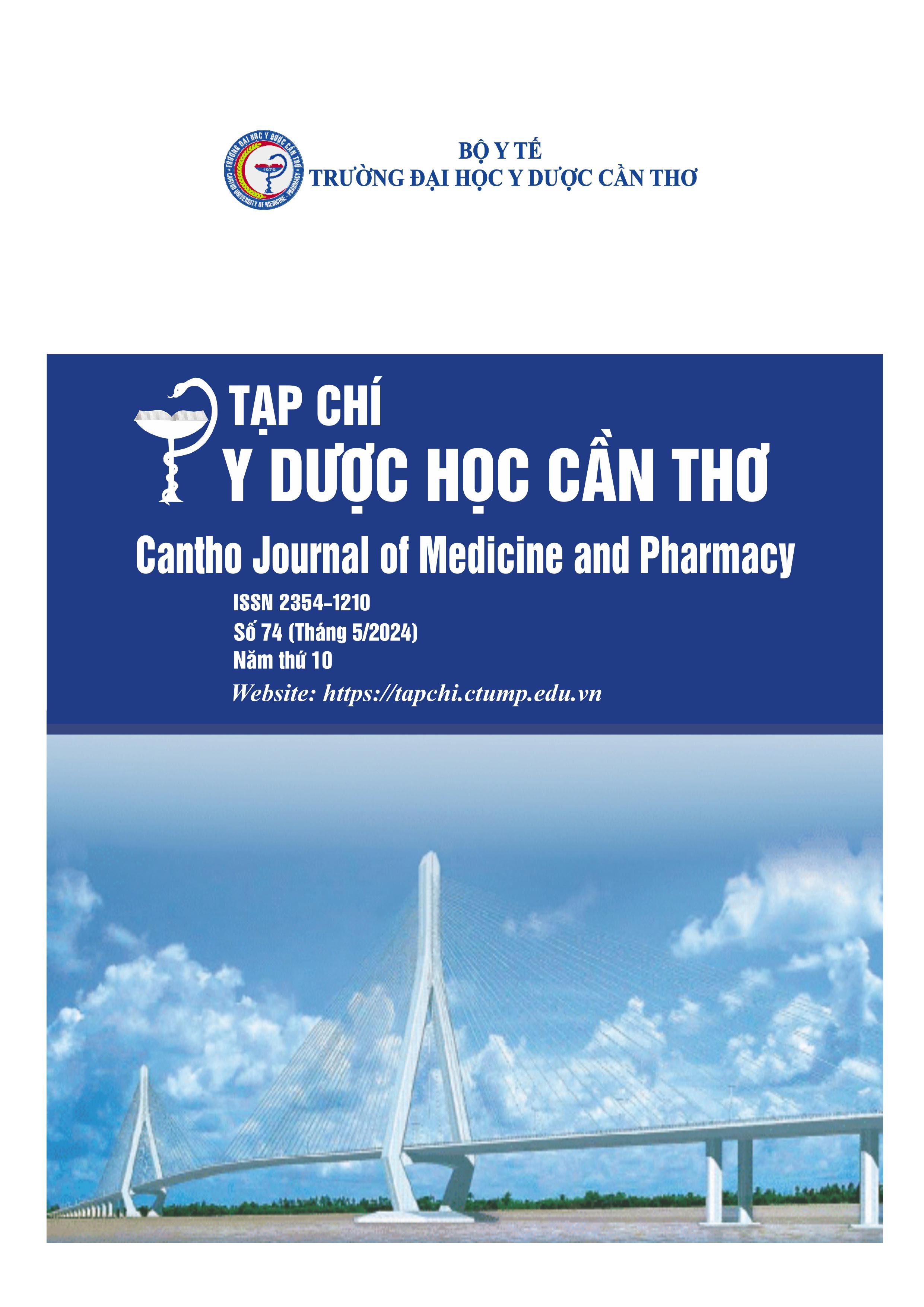THE OUTCOMES OF ASTHMA CONTROL AND SOME FACTORS RELATED TO INCOMPLETE ASTHMA CONTROL
Main Article Content
Abstract
Background: Asthma is a common chronic respiratory disease affecting all age groups, impacting 1-18% of the population depending on the country, and is a global health issue. In Vietnam, the average incidence of asthma is recorded at about 3,9% of the population, equivalent to about 4 million people infected and taking the lives of 3000-4000 people/year. Objectives: (1) To describe the clinical and paraclinical characteristics of asthma patients. (2) To evaluate the outcomes of asthma control after 3 months and some related factors. Materials and methods: Cross-sectional descriptive study was conducted on 40 asthma patients being treated at the Respiratory Clinic, Can Tho University of Medicine and Pharmacy Hospital. Results: Among the 40 patients participating in the study, there were 22 (55%) male and 18 (45%) female patients, with an average age of 53.03 ± 15.611. The prevalence of symptoms was cough (72.5%), wheezing (70%), shortness of breath (65%), and chest tightness (17.5%). The respiratory indices FVC% (86.10 ± 13.50), FEV1 % (74.43 ± 15.78), and FEV1/FVC (0.685 ± 0.0796). The rate of complete control was 72.5%, partial control 25%, and uncontrolled 2.5%. Gender and the method of using inhalers were factors related to incomplete asthma control. Conclusion: Asthma control is a process that requires coordination between the physician and the patient. Assessing symptoms, treatment issues, and adherence to inhaler use contributes to preventing symptoms, improving quality of life, and improving unwanted outcomes in the future.
Article Details
Keywords
Asthma, control asthma, related factors
References
2. Hoài Thương & Thủy Tiên. Ngày Hen Thế Giới 2021: Những quan niệm sai lầm về bệnh hen. 2021. https://www.hcdc.gov.vn/category/van-de-suc-khoe/ngay-hen-the-gioi-2021-nhungquan-niem-sai-lam-ve-benh-hen-1aebd209911a1b8651983bb74661a68e.html .
3. Nguyễn Thị Xuân Liễu, Võ Thị Rĩ, Phạm Quốc Dũng, Phạm Anh Tuấn, Hồ Thị Thanh Huyền và cộng sự. Đánh giá mức độ tiêu thụ thuốc điều trị hen phế quản nội trú: nghiên cứu tại bệnh viện tuyến quận thành phố hồ chí minh. Tạp Chí Khoa học Trường Đại học Quốc tế Hàng Bàng. 2023. 24(7), 9-16, doi: 10.59294/HIUJS.24.2023.
4. Nguyễn Thu Hằng, Vũ Thị Thủy. Khảo sát đặc điểm lâm sàng, cận lâm sàng và sử dụng thuốc trên bệnh nhân hen phế quản điều trị ngoại trú. Tạp Chí Y học Việt Nam. 2023. 520(2), 65-69, doi: 10.51298/vmj.v520i.4137.
5. Nguyễn Ngọc Điệp. Kết quả kiểm soát hen phế quản tại Bệnh viện Đa khoa tỉnh Bắc Ninh năm 2014. Trường Đại học Y Dược Huế. 2014. 40.
6. Nguyễn Thu Hằng, Vũ Thị Thủy. Khảo sát tình hình sử dụng thuốc và sự thay đổi chức năng hô hấp trên bệnh nhân hen phế quản điều trị ngoại trú. Tạp Chí Y học Việt Nam. 2023. 520(2), 284287, doi: 10.51298/vmj.v520i.4189.
7. Nguyen Van Tho, Vu Tran Thiên Quan, Do Van Dung, Nguyen Hoang Phu, Anh Tuan Dinh xuan et al. Gina implementation improves asthma symptoms control and lung function: a five-year real-world follow-up study. Journal of personalized medicine. 2023. 13(5), 809, doi: 10.3390/jpm13050809.


